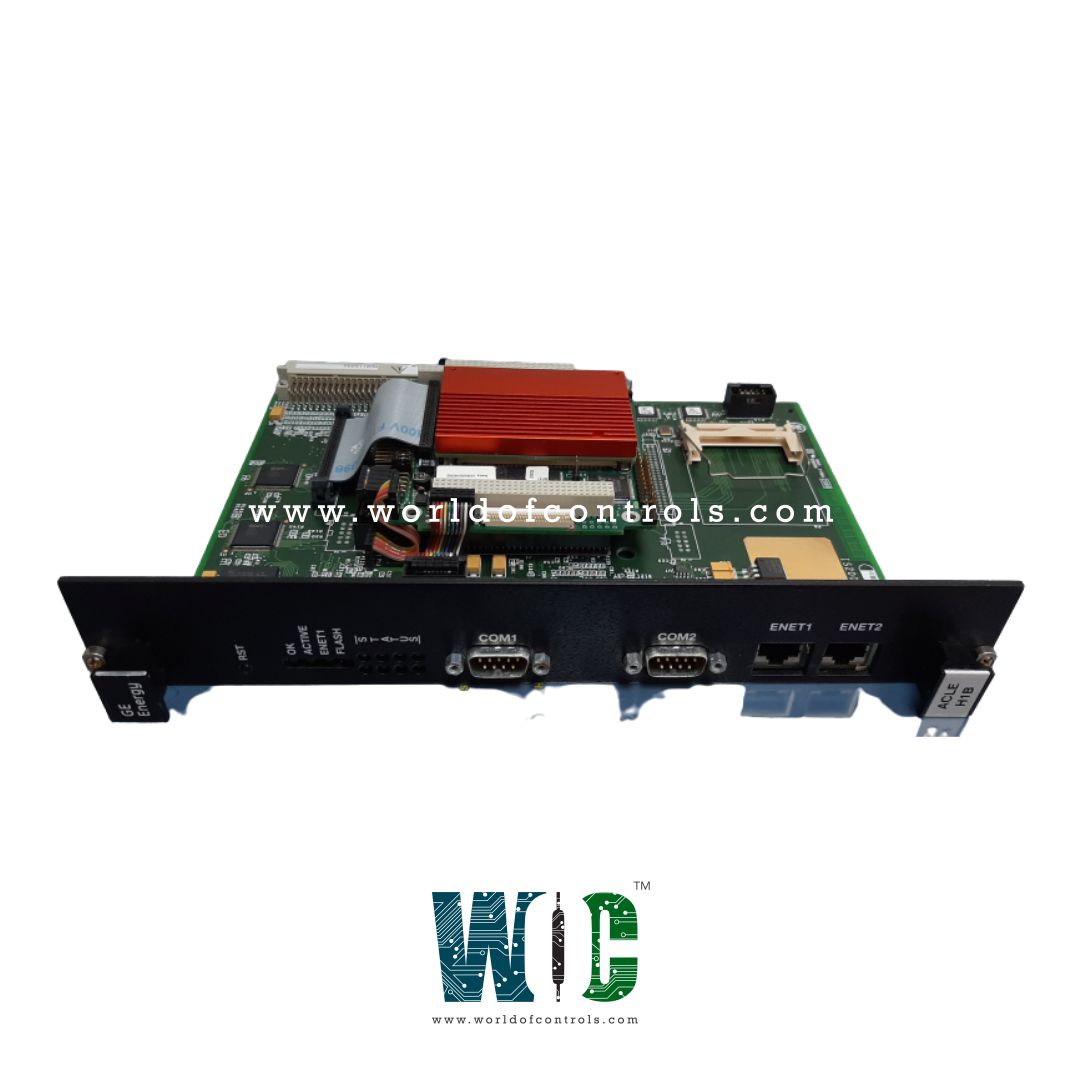SPECIFICATIONS
Part No.: IS215ACLEH1BB
Manufacturer: General Electric
Country of Manufacture: United States of America (USA)
Temperature Operating: -30 to 65oC
Processor: DX4-100 486
Bus rate: 33 MT/s
Bus speed:33 MHz
Product Type: Application Control Layer Board
Availability: In Stock
Series: EX2100
Functional Description
IS215ACLEH1BB is an Application Control Layer Board developed by GE. It is a part of the EX2100 excitation system. The Application Control Layer Module (ACL) stands as a pivotal component within control systems, boasting a microprocessor-based architecture that empowers it to undertake diverse tasks across communication networks, including EthernetTM and ISBus. Whether deployed within drive applications or EX2100 exciter setups, the ACL serves as a master controller, orchestrating critical functions with precision and efficiency.
Mounting and Configuration
- The ACL seamlessly integrates into standard Innovation Series drive or EX2100 exciter board racks, effectively utilizing two half-slots within the system architecture. Typically housed within the control cabinet, the ACL's strategic placement ensures accessibility and optimal performance.
- In drive setups, the ACL's P1 connector, featuring a 4-row 128-pin configuration, interfaces with the Control Assembly Backplane Board (CABP), facilitating seamless communication and control operations. Conversely, in EX2100 exciter configurations, the ACL securely mounts within the Exciter Backplane (EBKP), aligning with the unique requirements of excitation systems.
Product Attributes
- Microprocessor-Based Control: Leveraging advanced microprocessor technology, the board serves as the nerve center of control systems, executing a myriad of tasks with precision and speed.
- Multi-Protocol Compatibility: Equipped with versatile communication capabilities, it seamlessly communicates over EthernetTM and ISBus networks, facilitating seamless integration with diverse control architectures.
- Rack Compatibility: Designed to optimize space utilization, the ACL efficiently occupies two half-slots within drive or exciter board racks, ensuring efficient use of available resources while maximizing functionality.
- Centralized Control: As a master controller, it orchestrates and coordinates various control functions, ensuring synchronization and coherence across the entire system architecture.
- Scalability and Flexibility: With its modular design and adaptable configuration, the card offers scalability and flexibility, accommodating evolving system requirements and expanding operational needs with ease.
Features
- Control Blockware Language and Library: The core software encompasses a sophisticated Control Blockware language and library, facilitating the creation, customization, and execution of control algorithms and logic. This comprehensive suite of tools empowers system engineers to develop intricate control strategies tailored to specific applications and operational requirements.
- Online Application Configuration Loading: With the capability for online application configuration loading, the ACL enables dynamic adjustments and modifications to control parameters and settings without necessitating system shutdown or interruption. This feature enhances operational flexibility and facilitates real-time optimization in response to changing environmental conditions or operational demands.
- I/O Points and Internal Booleans Forcing: The core software supports I/O points and internal booleans forcing, enabling operators to manually override or force specific input/output states as needed. This functionality proves invaluable during testing, troubleshooting, and maintenance activities, allowing for precise control and manipulation of system variables and parameters.
- Diagnostics for Broken Run/Start Permissives: Incorporating advanced diagnostic capabilities, the core software is equipped to detect and diagnose issues related to broken run/Start Permissives. By continuously monitoring system status and operational parameters, it provides early detection of potential faults or malfunctions, enabling proactive maintenance and minimizing downtime.
- Application Level Alarm Messages: The software generates application-level alarm messages, providing operators with timely notifications and alerts regarding critical system events or anomalies. These alarm messages serve as valuable indicators of system health and performance, empowering operators to take prompt corrective actions and prevent potential disruptions or failures.
- Non-Volatile Flash Memory: Leveraging non-volatile flash memory, ensures data integrity and reliability by securely storing critical configuration parameters, application logic, and system settings. This resilient storage solution safeguards against data loss or corruption in the event of power outages or system failures, preserving system integrity and continuity of operations.
- Toolbox Interface and Support Through Ethernet: Facilitating seamless integration and remote access, the core software features a toolbox interface accessible through Ethernet connectivity. This interface provides system engineers and operators with intuitive tools and utilities for configuration, monitoring, and maintenance, enhancing operational efficiency and facilitating remote management capabilities.
- Application Control for Innovation Series Drives: Serving as a centralized control hub, the core software extends application control capabilities to Innovation Series drives, enabling seamless integration and coordination across diverse system components and subsystems. This interoperability enhances system performance, efficiency, and responsiveness, optimizing overall operational outcomes.
The WOC team is always available to help you with your EX2100 requirements. For more information, please contact WOC.
Frequently Asked Questions
What is IS215ACLEH1BB?
It is an Application Control Layer Board developed by GE under the EX2100 series.
What are the specifications of the CPU used in the system?
The CPU incorporates 16 K bytes of internal L1 cache and operates as a 486 type processor running at a frequency of 100 MHz.
What is the role of the PCI controller in the system?
The controller manages all memory, I/O, and configuration transfers to and from the PCI bus. It facilitates normal reads/writes from the CPU for memory and I/O transfers. However, for configuration reads/writes, the controller requires accessing as 32-bit transfers by initially writing the configuration address to an I/O port and subsequently accessing another I/O port to read/write the configuration register.
Can you elaborate on the functions performed by the PCI controller?
The controller acts as a vital component in the system architecture, orchestrating data transfers between the CPU and the PCI bus. It ensures efficient handling of memory, I/O, and configuration transactions, thereby optimizing system performance and functionality.
